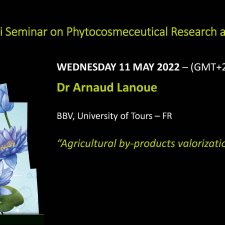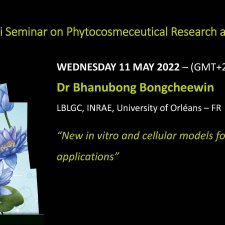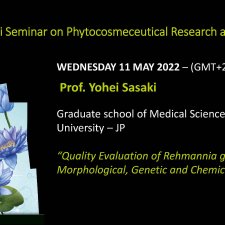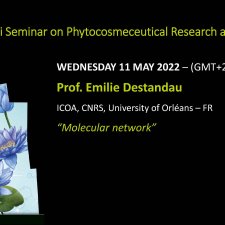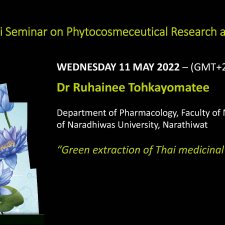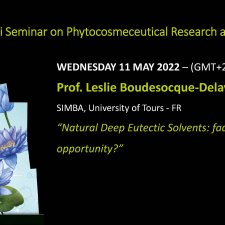Notice
Dr Varin Titapiwatanakun - Cocrystal engineering of oxyresveratrol
- document 1 document 2 document 3
- niveau 1 niveau 2 niveau 3
Descriptif
Oxyresveratrol (ORV) is a compound found in the heartwood of Artocarpus lakoocha Roxburgh (Moraceae). It has diverse biological and therapeutic activities covering antioxidant, anti-inflammatory, neuroprotective, antimicrobial. However, it has poor water solubility, oral availability and stability which challenge to delivery design and product development. Cocrystal engineering has been reported to be able to modify the physicochemical properties of a chemical compound and produce a superior chemical candidate for formulation design. 77 cocrystal formers with various functional groups were used for cocrystal screening via grinding, liquid-assisted grinding, solvent evaporation and slurry methods. Eight cocrystals (ORV with citric acid, glutaric acid, betaine, L-proline, isonicotinamide, nicotinamide, urea and ethyl maltol) were successfully produced and characteristic crystal properties were confirmed by powder X-ray diffraction, low frequency Raman spectroscopy and thermal analysis. The ORV-citric acid cocrystal showed enhanced solubility and permeability across the human intestinal tract. While the crystal structures of ORV-betaine and ORV-proline cocrystals were identified and solved by single-crystal X-ray diffraction. Therefore, cocrystallization could be applied to design novel parent molecules including drugs, herbal substances and vitamin for innovative delivery systems.
Thème
Dans la même collection
-
Dr Arnaud Lanoue - Agricultural by-products valorization
Winemaking generates different biomolecule-rich byproducts, including pomaces (skin and seeds), lees, as well as other solid wastes like grape canes.
-
Dr Bhanubong Bongcheewin - The Mint family (Lamiaceae) in Thailand- A potential material source for…
Lamiaceae is the large family, consisting of more than 7,000 species worldwide
-
Prof. Yohei Sasaki - Quality Evaluation of Rehmannia glutinosa by Morphological, Genetic and Chemic…
Previously, the medicinal plant, Rehmannia glutinosa, is grouped into two types in Japan. However, previous reports of genetic analysis of R. glutinosa in commercial products suggest the existence of
-
Prof. Emilie Destandau - Molecular network
Specialised metabolites constitute a high valuable resource of bio-active compounds that are highly sought after for pharmaceutic and cosmetic applications. However, plant extracts are very complex
-
Dr Ruhainee Tohkayomatee - Green extraction of Thai medicinal plants
Extraction is a major step to separate bioactive compounds from raw material and medicinal plants, which extracted by the pharmaceutical industry, either with conventional methods or modern
-
Prof. Leslie Boudesocque-Delaye - Natural Deep Eutectic Solvents: fad or real opportunity?
NaDES appeared at the end of the 2010s following the work of Dai et al. Since then, the enthusiasm for these new green solvents linked to ionic liquids has continued to grow.

